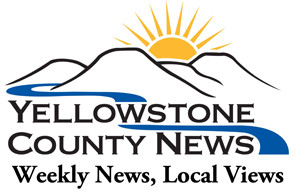Plans are continuing for Montana Fair, despite coronavirus social distancing constraints. But rather than just nine days of fair, from August 7 through 15, there may be twelve days of fair with the addition of pre-fair dates, July 31 to August 2.
Details, issues and potential solutions were discussed on Monday by Metra Park Manager Bill Dutcher, Assistant Manager Tim Goodridge and Marketing Director Ray Massie, with Yellowstone County Commissioners. Commissioners asked the Metra Park team to bring them updates every Monday.
Commissioner Denis Pitman said that as the commissioners talk to constituents they are being asked questions, and they need to know answers. Most of the feedback commissioners are getting about holding the fair, however, is very positive, and people want to see the “show go on.”
Whether Montana Fair, like many other events in the state, will be held became questionable given the threat of COVID-19 and quarantines, business closures, travel restrictions, and the enforcement by state and county officials of social distancing regulations and other health measures that have curtailed the free movement of citizens. Many events, including other fairs, concerts, races, and sporting events have been cancelled.
But with the state now in Phase 2 of reopening businesses and with the relaxation of “stay at home” restrictions and with the number of COVID-19 cases in decline, Montana Fair officials and county commissioners have been working on ways in which they can still hold the fair, even if it means doing so on a smaller scale.
Dutcher said, “We have been working at it every day, Monday through Friday.” They were encouraged with the success of holding high school graduation ceremonies last weekend, he said.
Dutcher said that they have been “listening to people in the community,” and, of course, conferring with Yellowstone County Health Officer John Felton for guidance and direction. “We are talking about open air and a lot of distancing.” Metra Park has four million square feet of open space.
“Nobody minds that we are cutting back,” he said. Roughly speaking they are estimating a fair doing about 40 percent of the business of a normal fair.
Goodridge said that the “point of no return” about holding the fair was June 1, and they made the decision to move forward when they received the commissioners’ commitment to support the Junior Livestock Show with $150,000.
That will be the biggest cost involved in putting on the fair, since there will be no concerts to fund. Concerts have always been the biggest cost and most often they generated little if any revenue for Metra Park.
So without night shows, this year, the fair will include the Junior Livestock Show, food vendors and the carnival. Food vendors and the carnival hold little risk of loss, said Dutcher. In fact, they are almost certain to generate revenue streams since Metra Park gets a percentage of all their sales.
About 4200 visitors are being planned for each fair day. Counters will keep track of the numbers coming and going. Adding the extra days allows them to spread the number of fair-goers out. “We are flattening the curve, too,” joked Goodridge, to which Commissioner Don Jones replied, “Let’s say we are ahead of the curve.”
With all the space and distancing and reduced number of fair-goers, there will be no lines, “You won’t have to wait for carnival rides or cotton candy.”
Metra Park comptroller, Kelly Campbell said that they have worked and reworked the numbers and believe that they will break even at about $620,000. “No guarantees,” she said.
Ostlund predicted, “I think you will be pleasantly surprised.”
One benefit of scaling back means that expenses will also be scaled back. Besides not having to pay for the shows – a cost of about $900,000 — labor costs will also be less, since producing the shows is what usually requires most of the labor.
CLICK HERE TO READ ENTIRE STORY

